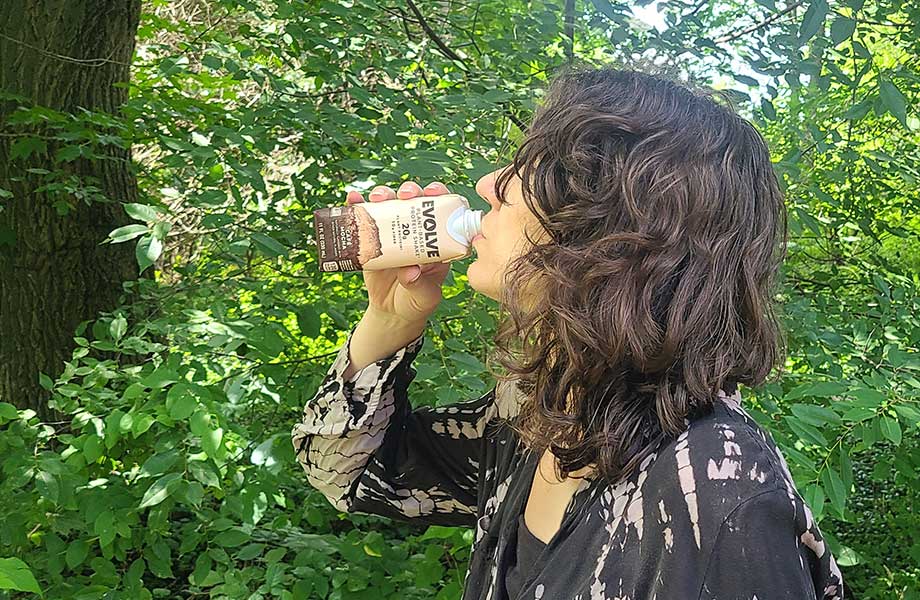We test and review fitness products based on an independent, multi-point methodology. If you use our links to purchase something, we may earn a commission. Read our disclosures.
Whether you’re trying to bulk up, lose body fat, make snacks more filling, or simply get more protein throughout the day, easy, go-to protein snack ideas that are convenient and nutrient-dense are a must.
Having healthy, high-protein meals and snacks in mind and on hand can help make it much easier to reach your health and fitness goals. As a registered dietitian, I’ve seen firsthand how helpful it is to plan your daily nutrition ahead of time. Pre-planning your snacks may seem like overkill, but doing this can make a difference when you’re short on time or if something unexpected comes up.
These protein-packed ideas can help you feel satisfied throughout the day and keep you on track to meet your macro goals.
Medical disclaimer: This article is intended for educational and informational purposes only. It is not intended as a substitute for medical advice. For health advice, contact a licensed healthcare provider.
Quick Facts About Protein Snacks
- Snacking on protein is a great way to help you feel full, support muscle strength and growth, and balance your blood sugar1.
- How much protein you need from snacks depends on your intake throughout the day and your body’s unique needs. Generally, you can aim for snacks that contain at least 5 grams of protein2.
- Protein-rich snacks can include tuna, eggs, nuts and edamame.
- Aim for high-protein snacks that are nutrient-dense but also convenient.
1. Meat and Cheese Plate
Have you ever thought about taking your favorite charcuterie board and making it snack-sized? It can provide a big protein punch while making your day feel just a little bit fancier. Use different meats and cheeses for a variety of flavors and textures, and consider adding a few whole-grain crackers or pieces of fruit for some complex carbohydrates.
As an example, a meat and cheese plate with one ounce of salami and one ounce sharp cheddar cheese provides 12 grams of protein.
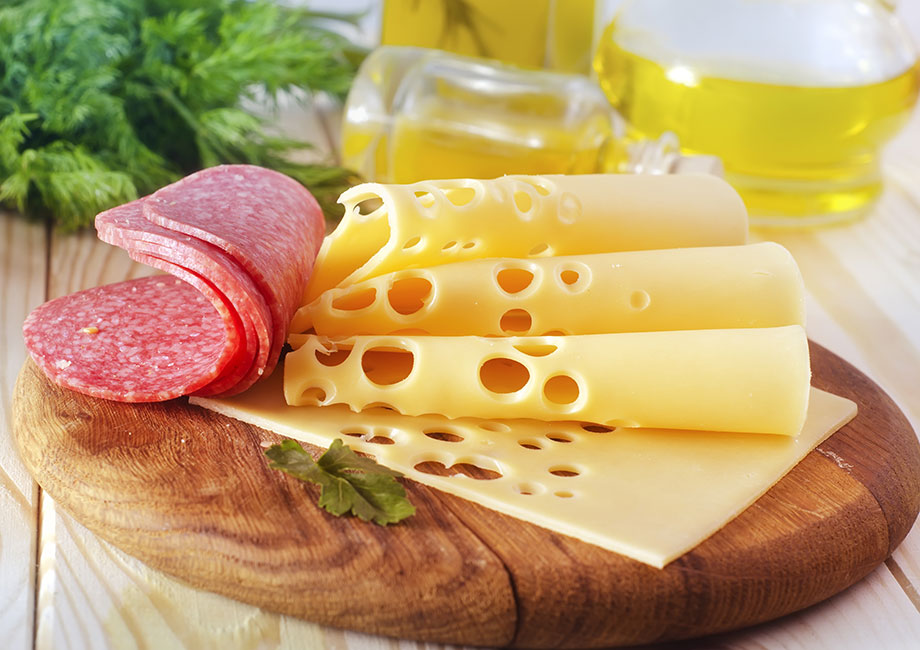
Try not to overdo it on the cold cuts, though—processed meats like these are often high in sodium and nitrates and may increase your risk of colorectal cancer3 if consumed too frequently. Try to choose reduced-sodium, uncured varieties and alternate with some of the other snacks listed below. You can also try plant-based varieties made from seitan or tofu.
RELATED: Low-Sodium Meal Delivery Service
2. Apple and Greek Yogurt
Apple slices with Greek yogurt are a light, refreshing way to up your protein intake. Greek yogurt is incredibly high in protein, with 12 grams per half cup. When paired with an apple, this gluten-free snack is also a good source of dietary fiber and vitamin C.
3. Jerky and Jerky Sticks
Beef jerky is one of the more travel-friendly snacks on this list and boasts about 10 to 14 grams of protein per one ounce serving.
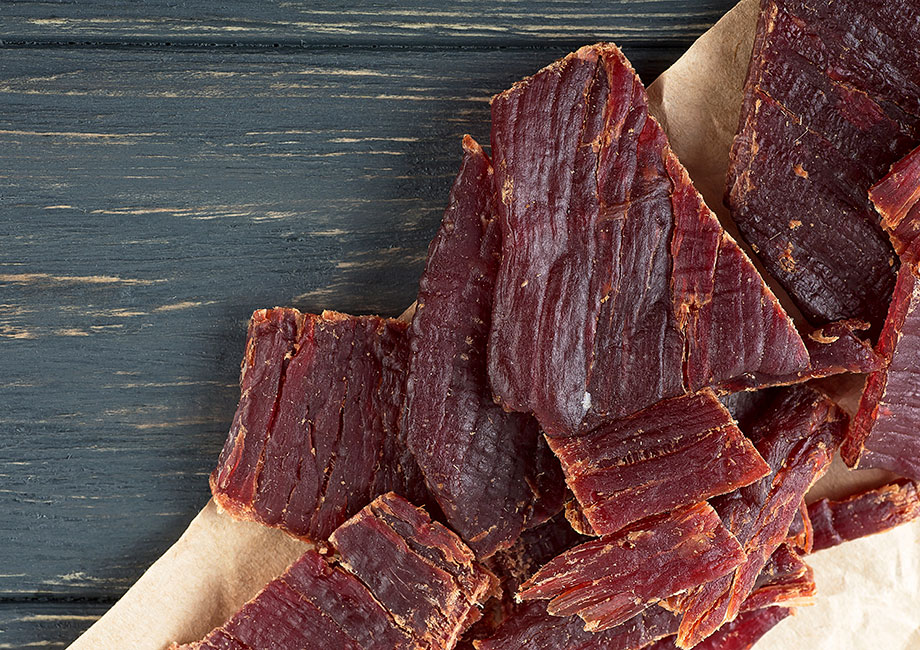
Plant-based jerky is becoming increasingly available as well. Some types contain 10 or more grams of protein, but vegan jerky varies widely in its protein content based on what ingredients are used to make it, so be sure to check the nutrition facts label before you buy.
RELATED: Plant-Based Protein Powder Benefits
To make this snack a little more balanced, consider pairing it with sliced vegetables, whole grain crackers, or fruit.
4. Turkey and Veggie Roll-Ups
Roll lean turkey and fresh veggies up in a whole-grain tortilla for an incredibly balanced snack (or light lunch). You’ll get around 12 grams of protein when using two ounces of deli turkey and one whole wheat wrap.
Using two tablespoons of cream cheese or hummus as a spread will add a couple more grams of protein, and the hummus will give you some heart-healthy monounsaturated fats.
RELATED: Best Heart-Healthy Meal Delivery
5. Tuna Salad and Crackers
Tuna can help you meet your protein goals with the extra benefit of being rich in anti-inflammatory omega-3 fatty acids. A three-ounce serving of tuna salad contains an impressive 14 grams of protein, and spreading it on whole grain crackers will provide the carbohydrates necessary for replenishing muscle glycogen after a workout.
Traditional tuna salad too boring? Try mixing things up by using hummus, avocado, or Greek yogurt in place of mayo and adding in finely chopped vegetables like bell peppers or cucumber.
6. Veggies and Yogurt Dip
Maximize the amount of protein in this refreshing snack option by using Greek yogurt or non-dairy yogurt that has been fortified with extra plant-based protein. Use different colored vegetables to make your plate visually appealing and for a boost of vitamins, minerals, and phytonutrients.
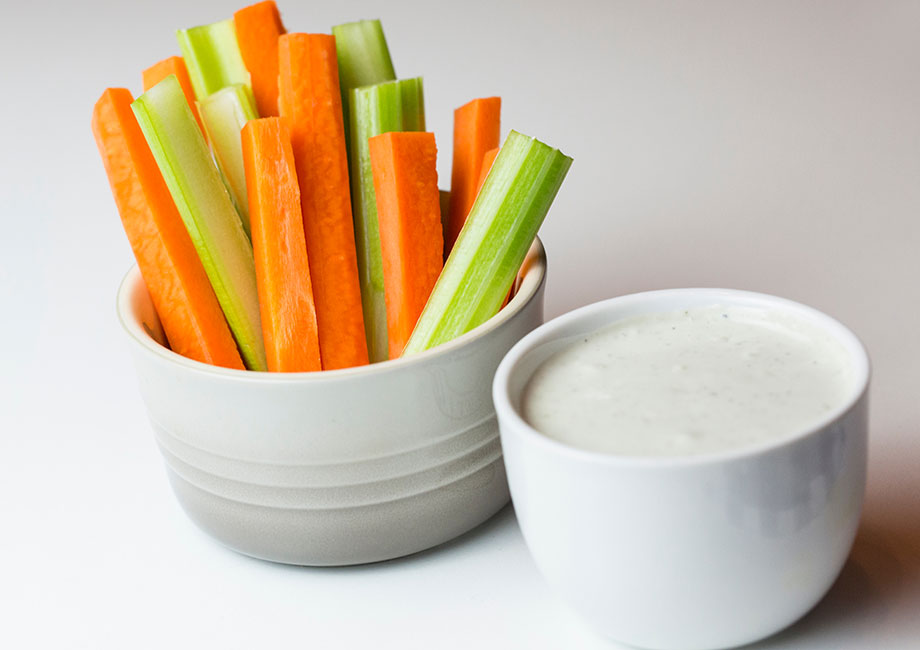
A half-cup serving of Greek yogurt with one cup of vegetables such as carrots or bell peppers provides about 13 grams of protein. A serving of broccoli, one of the best high-protein vegetables, will add a couple more grams.
7. Hard-Boiled Eggs
Hard-boiled eggs have six grams of protein in each large egg. Try pairing a couple of them with fresh fruit, vegetables, or nuts for a balanced, filling snack.
8. Fruit and Cottage Cheese
Cottage cheese is becoming increasingly popular due to its impressive protein content and versatility, with people adding it to lasagna, stews, and even pancakes. Kept simple, cottage cheese is great paired with fresh or thawed-from-frozen fruit for a bit of natural sweetness and dietary fiber.
You can eat cottage cheese straight from the container or whipped for a smoother texture and fluffier consistency. If you prefer a savory snack, drizzle your cottage cheese with a little olive oil and spices and use it as a dip for sliced veggies.
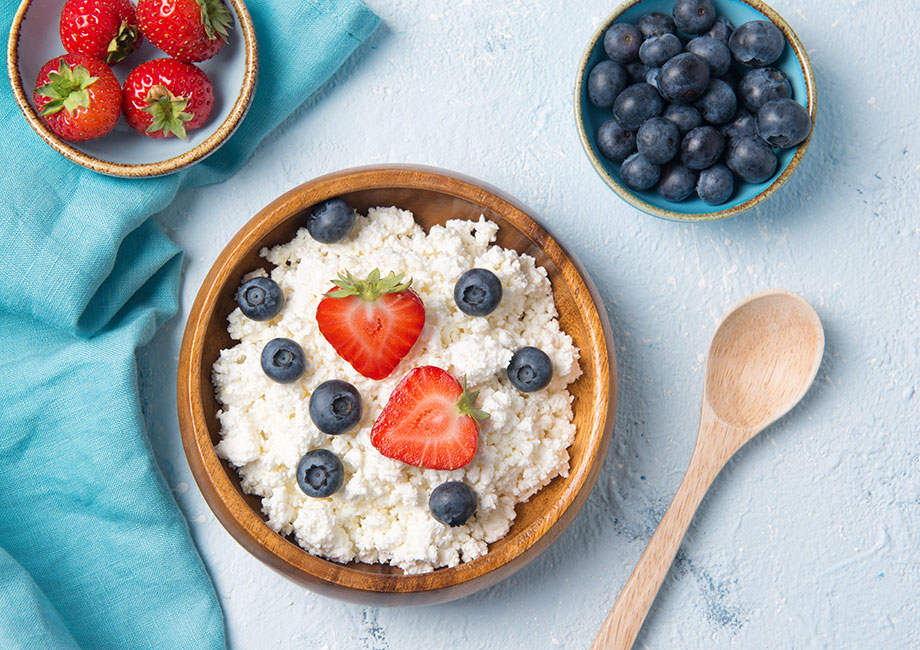
A half-cup of low-fat cottage cheese has 10 grams of protein, about the same amount found in Greek yogurt.
9. Mozzarella and Prosciutto Roll-Ups
Mozzarella cheese and prosciutto can be rolled in whole-wheat tortillas for a Mediterranean-inspired snack. A roll-up using one whole grain tortilla, one ounce of prosciutto, and a fourth-cup of part-skim mozzarella will give you an impressive 17 grams of protein.
Try adding roasted red bell peppers, sun-dried tomatoes, olives, or fresh spinach for extra flavor, color, and nutrition.
10. Greek Yogurt Parfait
Fruit-and-yogurt parfaits aren’t just for breakfast! Using Greek yogurt or protein-fortified non-dairy yogurt will up the protein content and provide a creamy base for berries and other fruit, granola, nuts, or chia seeds.
Both also provide a boost of bone-supporting calcium, as long as the non-dairy varieties are calcium-fortified.
RELATED: High-Protein Foods for Weight Loss, Chosen By A Dietitian
11. Apple with Peanut Butter
This classic sweet-and-salty pairing has about seven grams of protein when using two tablespoons of peanut butter and is surprisingly filling thanks to the healthy fats.
Not a fan of peanuts? Try almond butter, pecan butter, or tahini for a different (but still delicious) flavor profile. You can even add a sprinkle of dark chocolate chips for a healthy (ish) dessert.
12. Roasted Chickpeas and Pumpkin Seeds
Roasted beans may not sound like a very exciting snack, but chickpeas become pleasantly crispy and flavorful when cooked in the oven or air fryer with a little olive oil and your favorite spice blend.
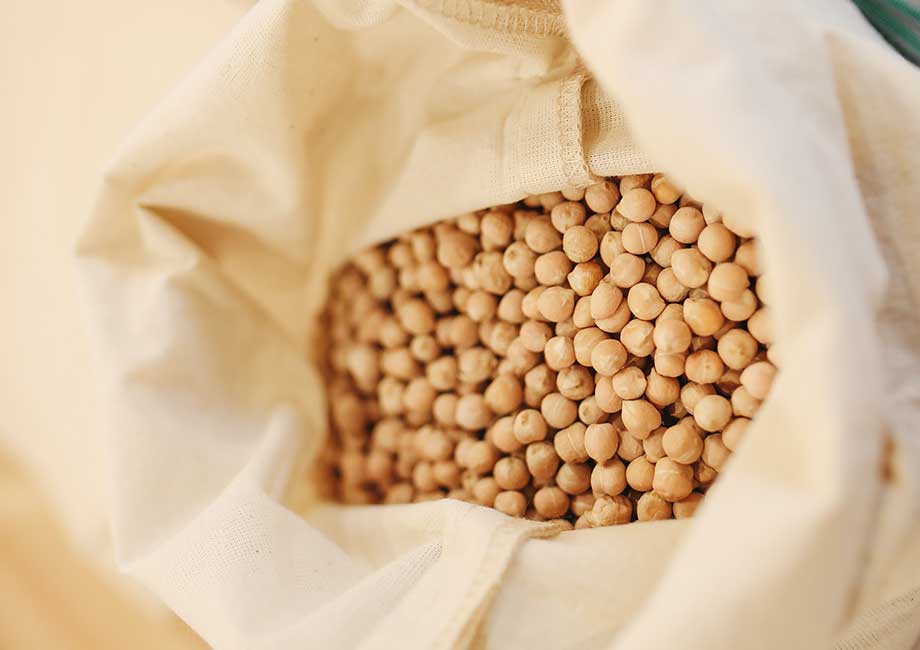
Eating them with pumpkin seeds adds extra crunchiness in addition to the amino acid methionine, which is slightly lower in chickpeas. This is a great plant-based pairing that has a complete amino acid profile to help optimize muscle growth.
A half-cup of roasted chickpeas with one ounce pumpkin seeds provides 15 grams of protein.
13. Edamame
Edamame is one of the best plant-based sources of protein, with 10 grams per half cup of shelled edamame. Because edamame are immature soybeans, they’re also a great source of anti-inflammatory isoflavones and complex carbohydrates.
Shelled edamame can be:
- Roasted with olive oil and seasonings to make a crunchy snack
- Blended into a creamy “hummus” alternative and paired with sliced veggies or a whole grain pita
- Chilled and tossed in a salad with diced bell peppers, cucumbers, quinoa, and a sesame-ginger vinaigrette
14. Protein Bar
Easy to grab and store in a purse, backpack, or gym bag, the best protein bars are some of the most convenient high-protein snacks. Most are made from whey protein, while plant-based bars can be made from a variety of sources like soy, pea, almond, or pumpkin seed. Depending on the product, protein bars can contain anywhere from six to 25 grams of protein.
RELATED: Protein Bar vs Shake
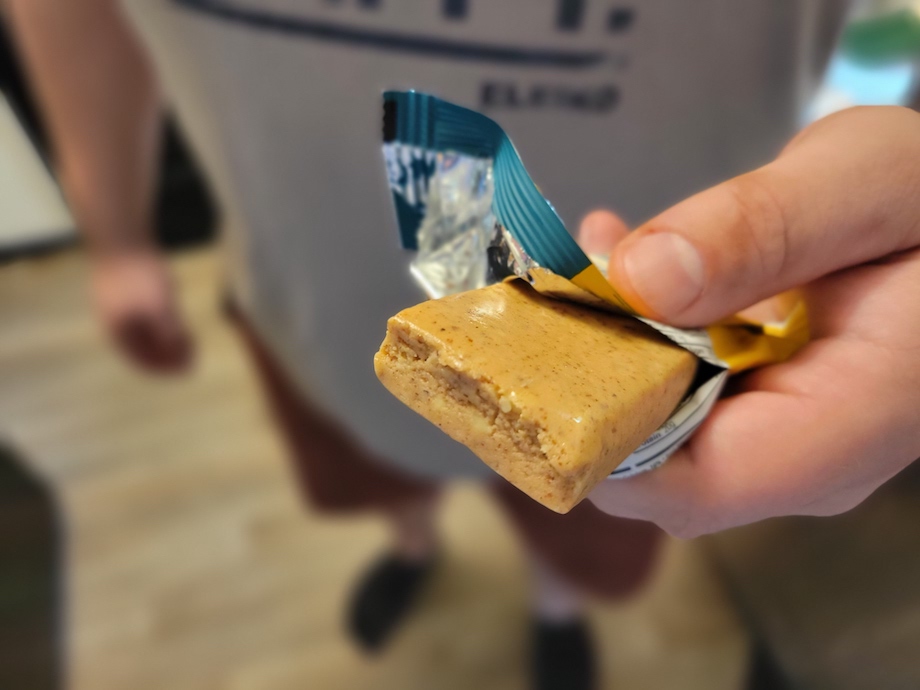
Protein bars also vary in their content of added sugars, net carbs, and dietary fiber. It’s best to check nutrition labels and read reviews in order to choose the best one for your needs.
RELATED: Best Low-Sugar Protein Bars
15. Protein Shake
Protein shakes can be store-bought or homemade, the latter of which are easily customizable, just check out our DIY protein shake guide. Most commercial varieties are made from whey protein, although plant-based and dairy-free versions are also available.
Most store-bought protein shakes have around 16 to 25 grams of protein. If you make your own shake with a serving of protein powder and a cup of dairy, soy, or pea milk, you’ll get about 28 grams of protein. If desired, you can increase the protein content further by blending hemp seeds, chia seeds, or more protein powder into your shake.
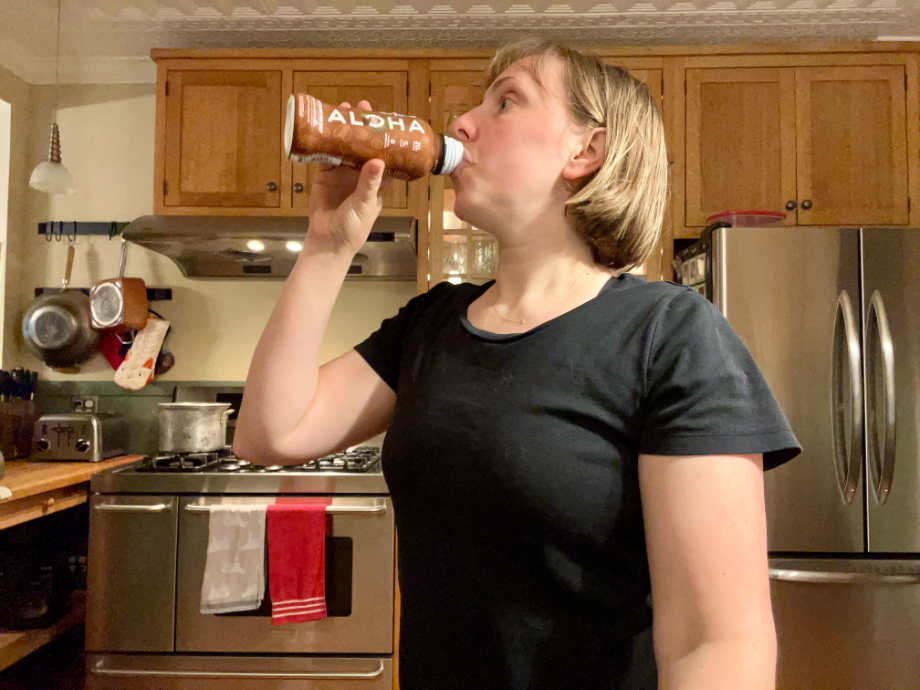
RELATED: How Many Protein Shakes a Day Should You Consume?
16. Trail Mix
The perfect snack for a long walk or hike, trail mix keeps you fueled with a balanced blend of all three macronutrients. According to the USDA, one cup of trail mix contains about 21 grams of protein—an ideal amount for a snack. Plus, who doesn’t love something crunchy to munch on?
However, if you’re not going to make your own mix, read the nutrition label carefully, as you don’t want to snack on something loaded with sugar and ultra-processed ingredients.
17. Protein Bites
Typically made from ingredients like nuts, seeds, protein powder, and nut butters, protein bites are a fun, convenient way to inch closer to your daily protein goal. Many recipes feature staple ingredients like oats, dried fruit, and honey or maple syrup to add both flavor and texture. You can also find premade protein bites—just watch out for added sugars. These travel-friendly treats are ideal for on-the-go snacking, as they provide a quick and easy way to boost your protein intake in a bite (or two).
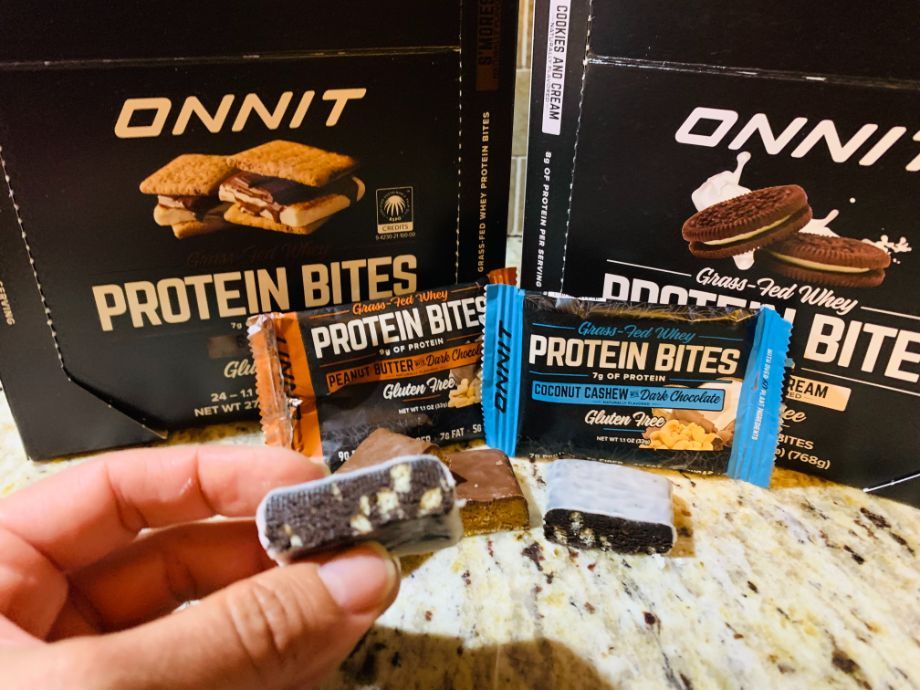
18. Chia Pudding
Chia seeds are an excellent source of protein, fiber, and omega-3 fatty acids—which are essential for optimal heart and brain health. One serving of chia seeds (about 2.5 tablespoons) contains 5 grams of protein, along with 10 grams of fiber and 9 grams of fat. Adding that to a cup of your preferred milk, along with some honey or your favorite natural sweetener, can produce a delicious dessert that delivers plenty of protein and far less sugar than a typical treat.
19. Egg Bites
Looking for an easy breakfast idea? Get ahead of the game and prepare some egg bites ahead of time so you don’t have to worry about making food in the morning. Stir up a few eggs with chopped chicken sausage, spinach, and cheese, pour the mix into a muffin pan, and bake until cooked for a high-protein, low-carb snack idea that tastes good at any time of day.
Feel free to flex your culinary muscles with this egg-centric snack. Experiment with different veggie and protein combinations, explore your spice rack, and get creative to keep things interesting.
20. Protein Smoothies
Whether it’s a pre-workout smoothie to fuel your training session or a post-workout smoothie for recovery, becoming best friends with your blender is one of the best decisions you can make. Protein smoothies may become your go-to snack since they’re convenient, versatile, and refreshing. Simply toss in your favorite fruits, a scoop of whey protein powder, a handful of ice, and some water and let the machine do all the work.
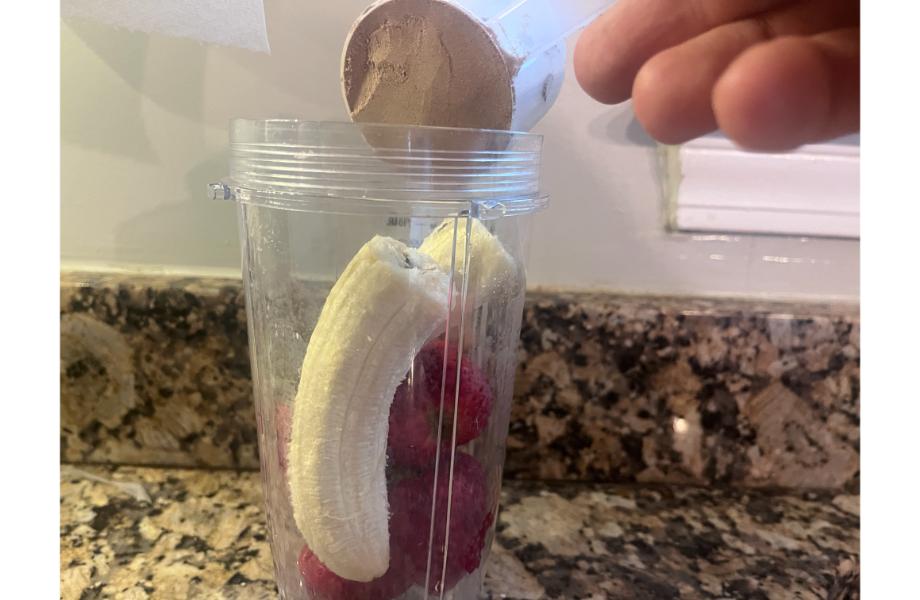
All you have to do is savor every sip of protein-packed goodness—and make sure to clean your blender so you can whip up another one again soon.
Benefits Of High-Protein Snacks
Why reach for a protein-packed snack over something that may satisfy your sweet tooth more? Here are some of the ways prioritizing protein can pay off when snacking:
- They keep you satiated (feeling full) longer than processed foods.
- They provide the building blocks for muscle growth and repair.
- They help maintain steady blood sugar levels, which can help prevent energy crashes and cravings.
- They require more energy to digest, which means you absorb less calories from protein than the other macros.
RELATED: Benefits of Collagen Protein Powder
How Much Protein Should You Eat Each Day?
According to the recommended dietary allowance (RDA) guidelines established by the USDA and U.S. Department of Health and Human Services, adults should consume 0.8 grams of protein4 per kilogram of body weight per day. While that’s the baseline, active individuals should consume much more to support muscle growth and repair. If you perform resistance training regularly, I’d shoot for around 2 grams per kilogram (or about 1 gram per pound) of body weight.
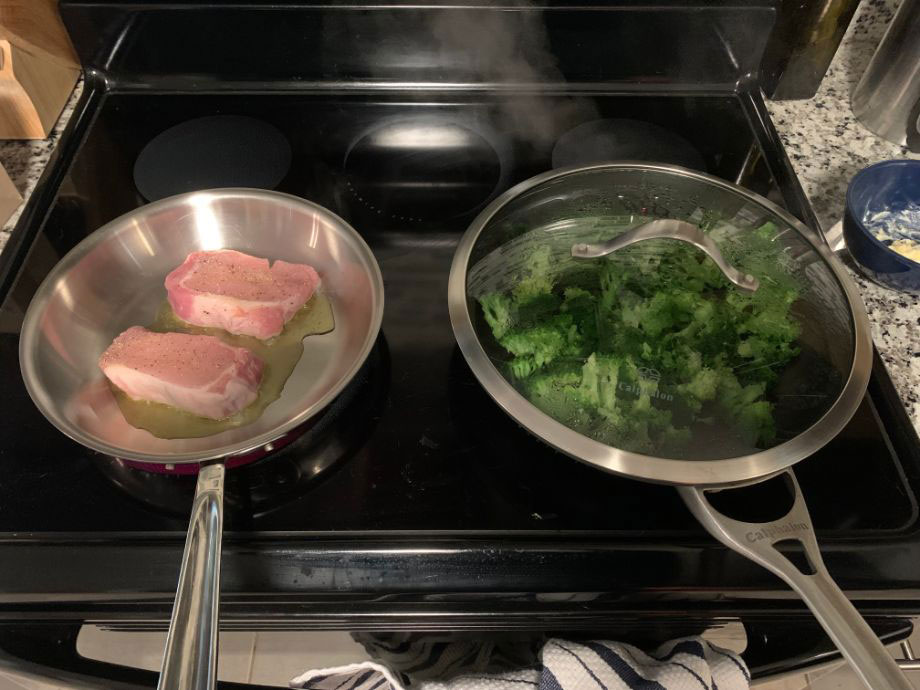
Consuming several high-protein meals will help get you close to your goal. However, adding one or two snacks that contain at least 15 to 20 grams of protein each can provide a sizable boost to your daily intake. This could include a mid-morning protein shake and a serving of Greek yogurt with chia seeds or almonds in the afternoon before you hit the gym.
RELATED: How Much Carbs, Protein, and Fat Per Day?
How To Choose The Best High-Protein Snacks
Figuring out what to snack on boils down to several factors. First, check the protein content per serving to ensure it provides a sufficient amount (ideally 10 to 20 grams) of the most important macronutrient. Second, stick with snacks with minimal added sugars and ultra-processed ingredients. If you don’t recognize a majority of the ingredients, skip it.
Other considerations include convenience and portability. If you’re someone who’s constantly on the move, keep protein bars and ready-to-drink (RTD) shakes on hand so you always have a quick source of protein available. If you work from home, use your break time to make a fresh smoothie bowl to support your health and fitness goals.
Protein Snack Ideas: Final Thoughts
Including one or two protein-rich snacks throughout the day can be a helpful strategy for meeting your protein goals, especially if you struggle to eat three full meals a day. To optimize your snack game, keep the following tips in mind:
- Spread your protein intake throughout the day to optimize muscle growth.
- Protein bars and shakes are helpful supplements, but shouldn’t take the place of whole foods in the diet.
- Pairing protein-rich foods with whole grains, nuts, fruits, and/or vegetables will provide a balance of protein, fat, and carbohydrates to make snacks more satisfying and support healthy blood sugar levels.
- Include some plant-based proteins for extra dietary fiber and antioxidants and less saturated fat.
RELATED: What Should My Macros Be?
Looking for more ideas? Check out these high-protein foods for muscle-building, or consult a registered dietitian nutritionist for individualized recommendations and strategies for optimizing your protein intake and overall diet.
Protein Snack Ideas: FAQs
How can I get protein fast?
Extra quick ideas for protein include protein bars or shakes, nuts, seeds, jerky, nut butters, pre-roasted chickpeas or edamame, Greek yogurt, and cottage cheese.
How can I get 20g of protein in a snack?
There are many tasty ways to get 20 grams of protein, including a serving of Greek yogurt topped with almonds, three or four eggs, a few ounces of chicken or lean beef, or a whey protein shake. Vegan-friendly options include a smoothie made with plant-based protein powder, a serving of edamame, or mixed nuts and seeds.
How can I eat 100 grams of protein per day?
Eating three meals per day that include lean proteins like chicken, fish, tofu, tempeh, or lentils and snacking on nuts, nut butter, Greek yogurt, cottage cheese, or roasted chickpeas can help you eat 100 grams of protein per day.
If you find it difficult to get 100 grams from whole foods alone, try adding a protein shake or protein bar. You can also add protein powder to smoothies or oatmeal.
RELATED: Protein Smoothie Recipes
Medical disclaimer: This article is intended for educational and informational purposes only. It is not intended as a substitute for medical advice. For health advice, contact a licensed healthcare provider.
References
- A building block for good health: the benefits of protein. (2024, February 22). https://atriumhealth.org/dailydose/2024/02/22/a-building-block-for-good-health-the-benefits-of-protein
- Warner, L. (2024, April 18). High-protein snacks to build muscle and keep hunger at bay. Harvard Health. https://www.health.harvard.edu/nutrition/high-protein-snacks-to-build-muscle-and-keep-hunger-at-bay
- World Health Organization (WHO). Cancer: carcinogenicity of the consumption of red meat and processed meat. WHO website. October 2015. Accessed October 9, 2023.
- Hudson JL, Wang Y, Bergia Iii RE, Campbell WW. Protein Intake Greater than the RDA Differentially Influences Whole-Body Lean Mass Responses to Purposeful Catabolic and Anabolic Stressors: A Systematic Review and Meta-analysis. Adv Nutr. 2020 May 1;11(3):548-558. doi: 10.1093/advances/nmz106. PMID: 31794597; PMCID: PMC7231581.
Further reading

Should you do cardio before or after weights? Discover the optimal time to get your steps or strides in from our team of fitness experts. Read more

Need cardio motivation? There are many benefits of walking on a treadmill, from better heart health to stronger bones. Here we'll discuss the most well-studied. Read more

Chasing your tail trying to find the best pre-workout for running? Run, don't walk, to discover our expert-curated picks! Read more

In this Nutricost Pre-X Pre-Workout review, we’ll evaluate this supplement’s taste, solubility, formulation, and more. Read more

